When coming to the topic of deep-sky photography, deep-sky cooled cameras are thought to be the indispensable astrophotography tool. But do you know why every star gazer needs a deep-sky cooled camera? Let's read the article below and you will know why.
Why Choose Deep-Sky Cooled Cameras for Astrophotography?
When photographing deep-sky objects like the Orion Nebula, Andromeda Galaxy, or the Veil Nebula, astrophotographers are dealing with an incredibly faint light that has traveled millions or even billions of light-years to reach the camera sensor. To capture these dim signals, you will use long exposure times, ranging from several seconds to multiple minutes per frame.
But here‘s the catch: the longer the camera sensor is exposed, the more it heats up. And heat is the enemy of astrophotography. As the sensor warms, it generates thermal noise – random, unwanted signals that can overwhelm the faint light from distant stars and nebulae. This noise manifests as grainy, speckled patterns in images, obscuring the delicate details that astrophotographers worked so hard to capture.
Deep-sky cooled cameras are the secret weapon against the night sky's greatest challenge: heat. With cooling systems that plunge the sensor temperature to 30°C to 50°C below ambient, these cameras transform your astrophotography from grainy and noisy to crystal-clear masterpieces. Imagine capturing the delicate tendrils of the Veil Nebula or the vibrant core of the Andromeda Galaxy with stunning clarity – these cameras make it possible.
Think of it like this: if the sensor is a crowded room, thermal noise is the background chatter that makes it hard to hear the person speaking (the faint light from deep-sky objects). Cooling the sensor is like turning down the volume on that chatter, making the signal that astrophotographers want to capture crystal clear.
What to Look for in a Deep-Sky Cooled Camera?
- Cooling Performance: Aim for cameras that can achieve at least 30°C below ambient temperature.
- Sensor Size and Resolution: Larger sensors and higher resolutions capture more details but balance this with the telescope‘s optics.
- Quantum Efficiency (QE): A higher Quantum Efficiency (QE) means your camera becomes a light-hungry powerhouse, capable of capturing the faintest whispers of light from distant galaxies and nebulae. It's like giving your camera night vision, allowing you to reveal the hidden beauty of the cosmos that‘s invisible to the naked eye.
- Compatibility: Ensure the camera works with the existing equipment, including telescope, mount, and software.
What is ToupTek Astro SkyEye Series DSO Cooled Cameras?
The ToupTek Astro SkyEye Series DSO Cooled Cameras are advanced tools designed for capturing stunning images of deep-sky objects like galaxies, nebulae, and star clusters. This series includes SkyEye62AC (color), SkyEye62AM (monochrome) and SkyEye24AC (color).
The SkyEye series DSO (USB3.0) cameras feature Sony Exmor R/RS high-performance full-frame image sensors (ideal for capturing wide and detailed shots) with a resolution ranging from 24 to 61 megapixels. They boast ultra-low read noise and Zero Amp-Glow technology, ensuring clean and noise-free images. The built-in cooling system keeps the sensor 35°C below ambient temperature, reducing thermal noise for sharper images. To prevent condensation in cold environments, the cameras feature a heated glass window with four adjustable levels.
Why Choose ToupTek Astro SkyEye Series DSO Cooled Cameras?
Let's evaluate one of the best deep-sky cooled cameras, the SkyEye series, in the four key aspects mentioned above: cooling performance, sensor size and resolution, quantum efficiency and compatibility.
1. Cooling Performance: -35℃
The SkyEye series cameras can achieve -30°C below ambient under short exposure and -35°C under long exposure (> 1s).
The cooling system of the SkyEye series cameras is two-stage Thermoelectric Cooling (TEC) with a controllable electric fan assisting heat dissipation. The working temperature can be regulated to a specific number, and the effective temperature drop can be -35°C from ambient temperature. Such efficient cooling system guarantees the stability of ultra-low noise mode and the quality of the camera image. The advanced cooling system maintains precise temperature control, ensuring consistent performance.
2. Sensor Size and Resolution
| Model | Sensor | Size |
| SkyEye62AC | Sony IMX455 Color | 9568*6380 |
| SkyEye62AM | Sony IMX455 Mono | 9568*6380 |
| SkyEye24AC | Sony IMX410 Color | 6064*4040 |
With resolutions up to 61 megapixels, these cameras capture stunning detail.
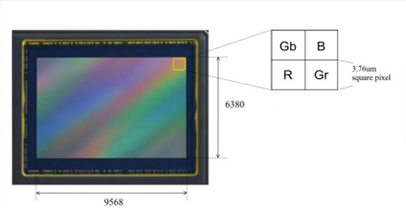
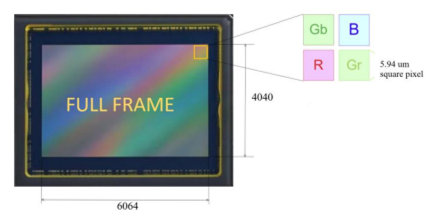
3. Quantum Efficiency (QE) Peak: >80%
| Model | QE Peak |
| SkyEye62AC | >80% |
| SkyEye62AM | >91% |
| SkyEye24AC | >80% |
With a Quantum Efficiency (QE) peak of over 80%, the SkyEye series does not just capture light but it devours it, transforming faint starlight into vibrant, detailed images. It is like having a telescope that sees deeper into the universe than ever before, revealing secrets that have been hidden for millennia.
The sensor sensitivity of SkyEye62AM is 435.5mV with 1/30s. The sensitivity is measured with a testing standard lens with CM500S (t = 1.0 mm) as an IR-cut filter and image at F8.0. If the image is measured at F5.6, the result could have been 2 times of the current value.
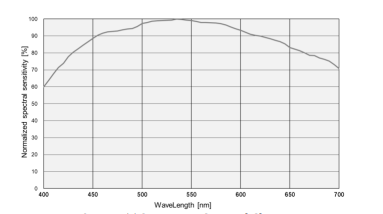
The sensor G sensitivity of SkyEye62AC is 484.18mV with 1/30s. Its spectral sensitivity is shown in the graph blow:
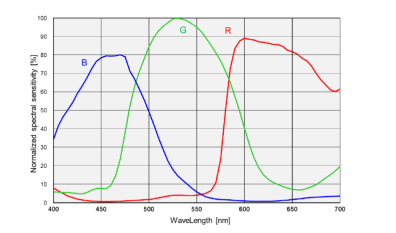
The sensor G sensitivity of SkyEye24AC is 572.76mV with 1/30s. Its spectral sensitivity is shown in graft blow:
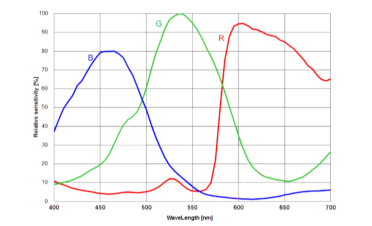
4. Compatibility
The SkyEye series deep-sky cooled cameras can be connected to a telescope with the proper adapter, or the camera lens. The most common adapters are already included in the package, but we also provide some specific adapters based on the requirement. The female flange to the sensor is 17.5mm. Users can make it to a 55mm back focus length with the 21mm and 16.5mm extenders included in the camera package.
-
Packing List:
The SkyEye series cameras come with a set of accessories, including:
- Power line*1
- USB3.0 data cable*1
- Wrench*1
- 3 Adapter rings : M54M-M48F_21mm, M48M-M48F_16.5mm and M48M-M42F_0mm
- Connection with other astronomical equipment:
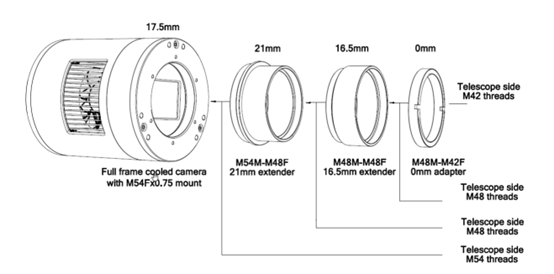
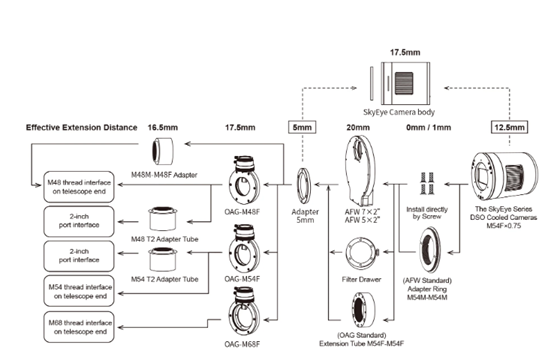
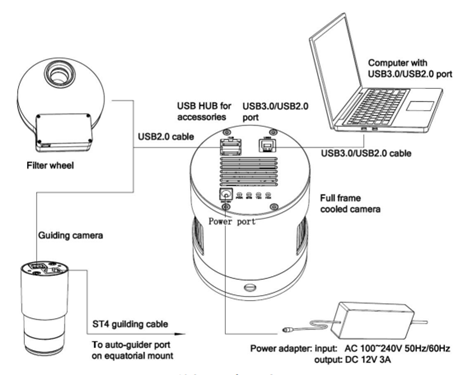
How SkyEye Series Cameras Perform?
Behold the universe through the lens of the SkyEye series. These jaw-dropping images are captured by SkyEye series users.
- Rosette Nebula by Liu Pushun, using SkyEye62AC

- LBN762 by Jiang Wu, using SkyEye62AM
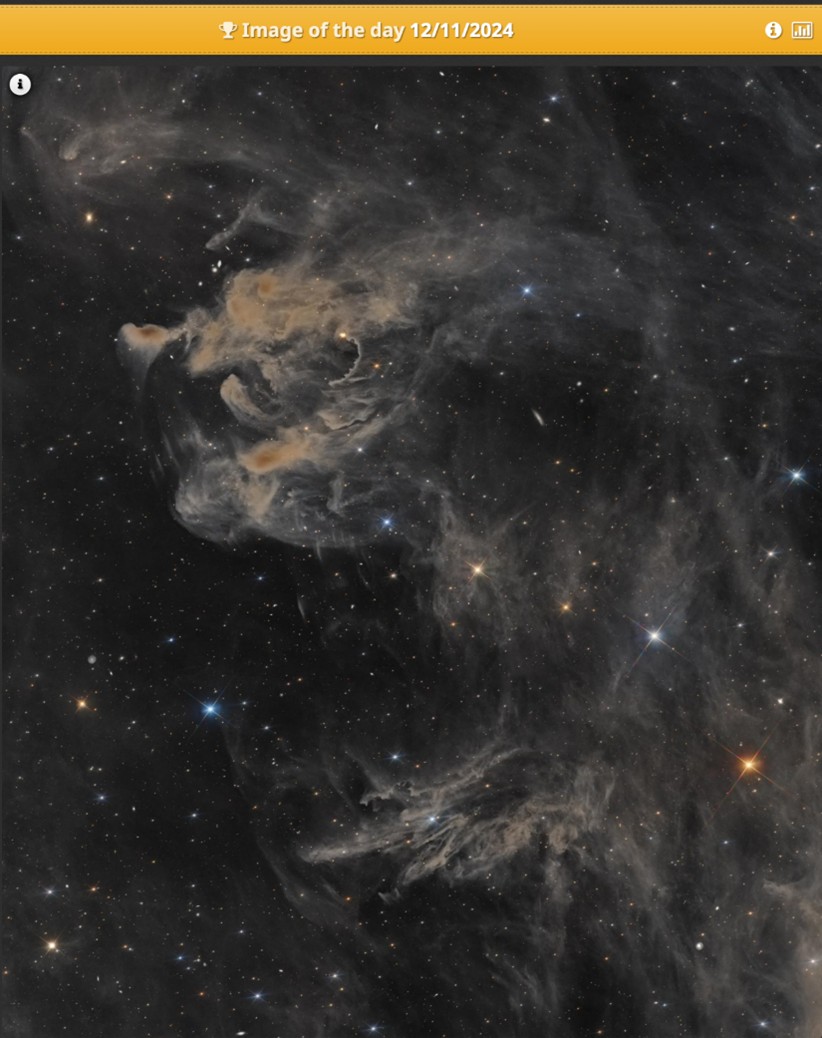
- Heart Nebula and Soul Nebula by Yu Haoxiang, using SkyEye62AC and G3M678C.
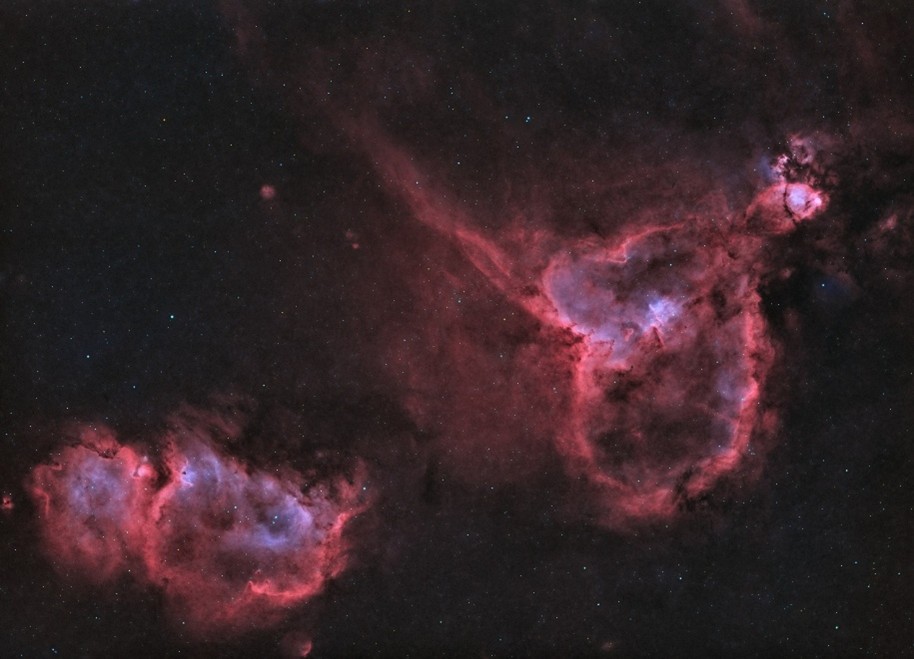
User Reviews

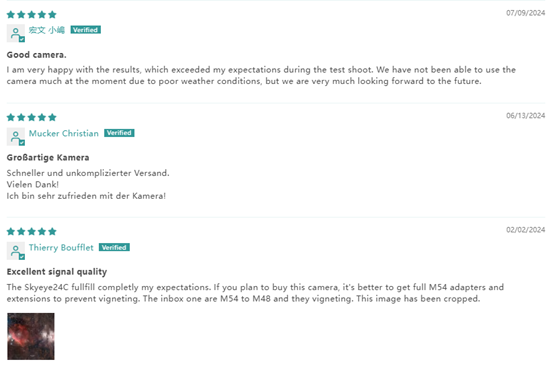
Shop Now With Confidence:
Upgrade your astrophotography with SkyEye! Shop now for high-performance DSO cameras.
- 2-year Warranty: All cameras purchased from ToupTek Astro official online store will have 2-year warranty.
- Secure Checkout: Your payment information is protected with industry-leading encryption.
- Direct Technical Support: Our team is available to answer your questions and help you get started. Ask now.